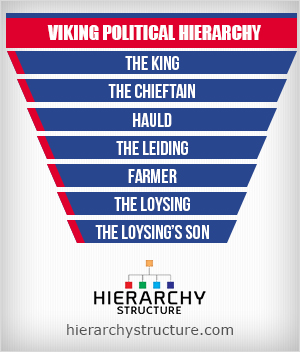A large number of Scandinavians left their homeland between the AD 800 and 11th century in order to seek fortunes elsewhere and these warriors were collectively called Vikings. Another term used to refer to these people were the Norsemen who were a self-regulated society. The political and law system was known as the Thing system which has both legislative and judiciary powers. In this system, every free man had certain duties which they needed to attend to. To understand the political hierarchy of the Vikings, you can refer to the given below information.
The King
The King was the highest member of the Viking political system and had the maximum number of powers. The King and his men had many rights and privileges which not all other classes of the system enjoyed. He was a clever hunter and also was believed to have magical abilities. The king appointed his/her staff and made laws that were to be followed by the rest of the people of the kingdom.
The Chieftain
The Chieftain was second in power and position as far as the Viking political system was concerned. He lived his life in luxury and was very wealthy as well. The Chieftain was very skilled in many areas of work such as war, farming, fishing, riding horses etc.
Hauld
A hauld was a freeholder who owned farms and was involved in farming.
The Leiding
The Leiding or the tenant was a person who rented or leased a farm from a hauld and gave the payment in the form of food. Anyone could be a Leiding from the chieftain to a former farm worker.
Farmer
This was the next hierarchy position in the Viking political system and was a free man who had all the rights and privileges in the society. The farmers tended to the farms and made a number of goods such as spun thread, looms, built houses, ploughed fields and made carts and fences as well.
The Loysing
The loysing or the bondsman was a slave who had been freed by his/her owner. They came at the lowermost point in the political system of the Vikings and were still dependent on the owner in some ways. A loysing was allowed to win his/her freedom by displaying hardwork.
The Loysing’s Son
These people represented a different or distinct class and were also among the lowest members of the society.

